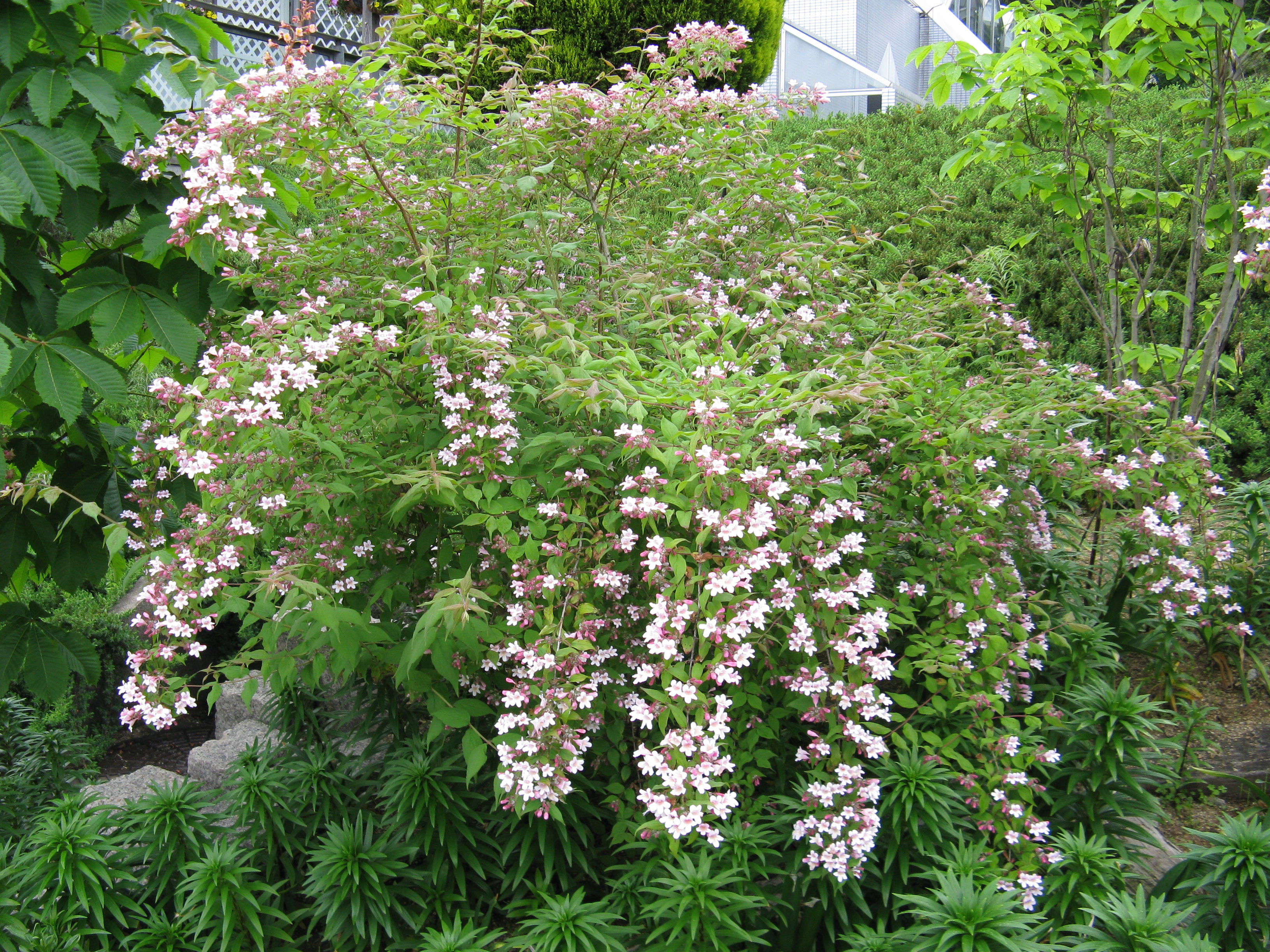- Kolkwitzia amabilis
image width =
regnum =Plant ae
divisio = Magnoliophyta
classis =Magnoliopsida
ordo =Dipsacales
familia =Caprifoliaceae
genus = "Kolkwitzia "
species = "K. amabilis"
binomial = "Kolkwitzia amabilis"
binomial_authority =Graebn. "Kolkwitzia amabilis" is a species of woody flowering plant in the honeysuckle family known by the common name Beauty Bush, for "amabilis", "lovely". The plant originated in Central China, where it was discovered in western Hubei province by Ernest Wilson [ [http://www.st-andrews.ac.uk/~gdk/stabotanic/jun05pom.htm St Andrews Botanical Garden: "Kolkwitzia amabilis"] ] and was named for
Richard Kolkwitz , a professor of botany in Berlin. [cite book | last = Albert | first = Render | authorlink = | coauthors = L.H. Bailey (Ed.) | title = The Standard Cyclopedia of Horticulture | publisher = MacMillan & Co., Ltd. | date = 1917 | location = London | pages = 1757 | url = http://books.google.com/books?id=72EDAAAAMAAJ&pg=PA1757&dq=Kolkwitzia+amabilis&as_brr=1 | doi = | id = | isbn = ] The plant is an arching, spreading shrub, with light brown flaky bark and graceful arching branches, which can grow higher than eight feet tall. It is usually as wide as it is tall. The plant blooms in late spring. Its light pink flowers, dark pink in the bud, are about one-inch long and bell-shaped ("tubular campanulate"); they grow in pairs, as with allCaprifoliaceae , and form showy, numerous sprays along ripened wood. Its leaves are opposite, simple, and ovate, from .5 to 3 inches long, entire or with a few sparse shallow teeth. Its fruit is a hairy, ovoid capsule approximately .25 inches long. [ cite web|url=http://plants.usda.gov/java/profile?symbol=KOAM80&photoID=koam80_002_ahp.tif |title=USDA PLANTS Profile for Kolkwitzia amabilis |accessdate=2008-01-15 |work=PLANTS Database |publisher=U.S. Department of Agriculture ]Wilson sent plant material to his sponsors
Veitch Nurseries , Exeter, in 1901; the shrub flowered there for the first time in 1910. It received aRoyal Horticultural Society Award of Merit in 1923 for Nymans Gardens, Sussex. The shrub became very popular in the Eastern United States following World War I, almost a defining shrub in American gardens made between the World Wars.In the garden, the shrub needs plenty of room to develop its long, arching sprays, reducing the temptation to club it back, which results in a unnatural "witches' broom". Occasionally older stems thicker than a broomstick should be removed at the base when the shrub is dormant, to encourage young, free-flowering growth.
References
Wikimedia Foundation. 2010.

